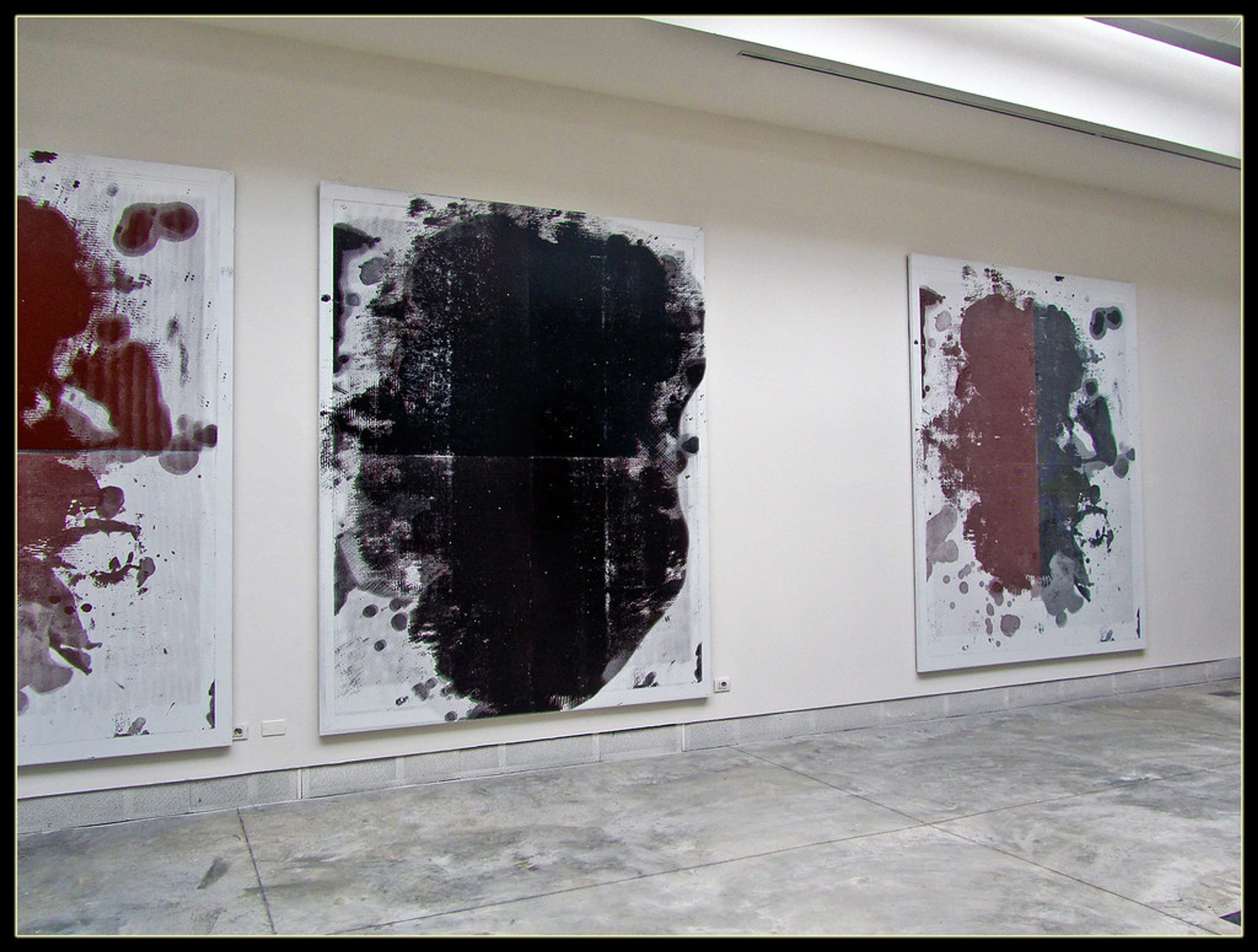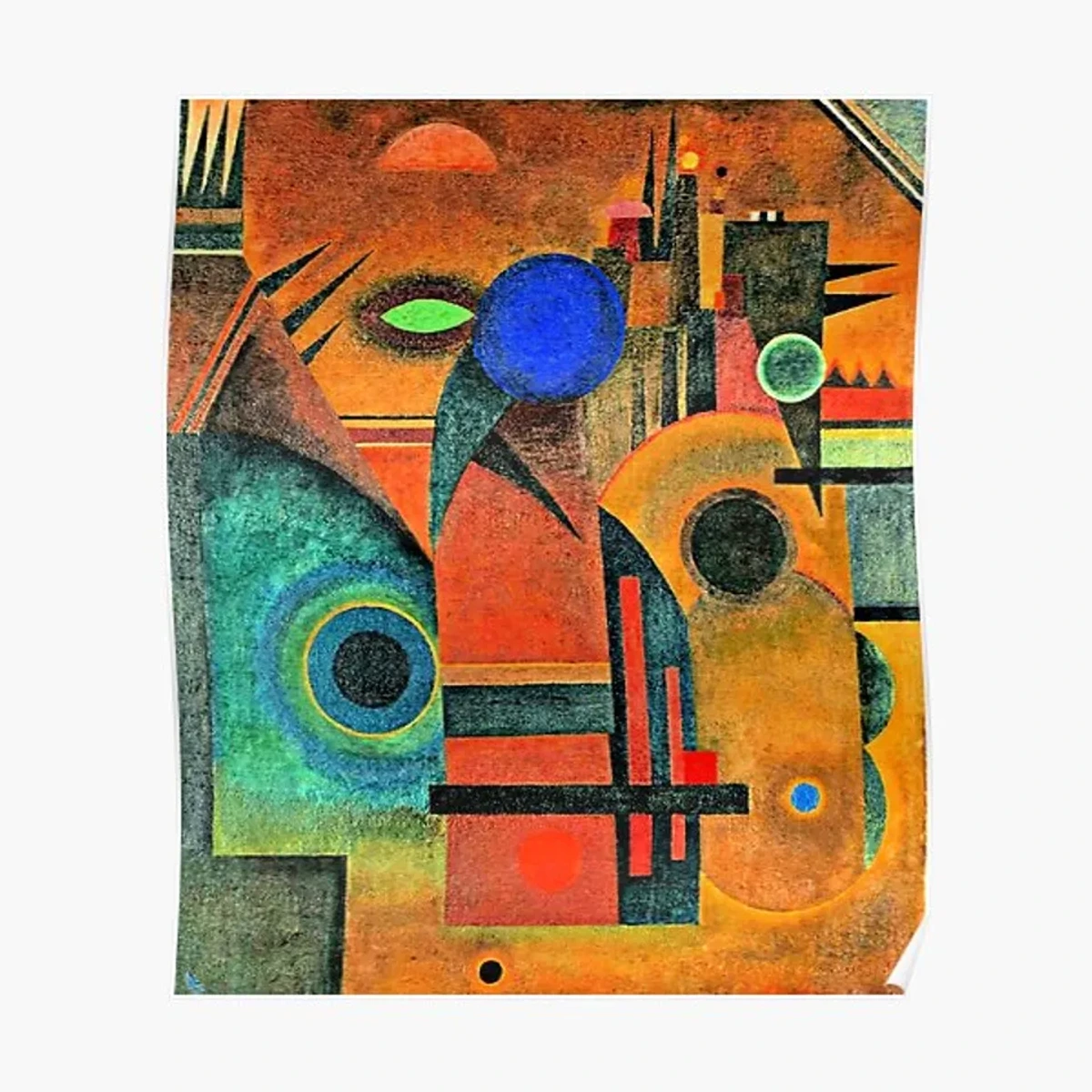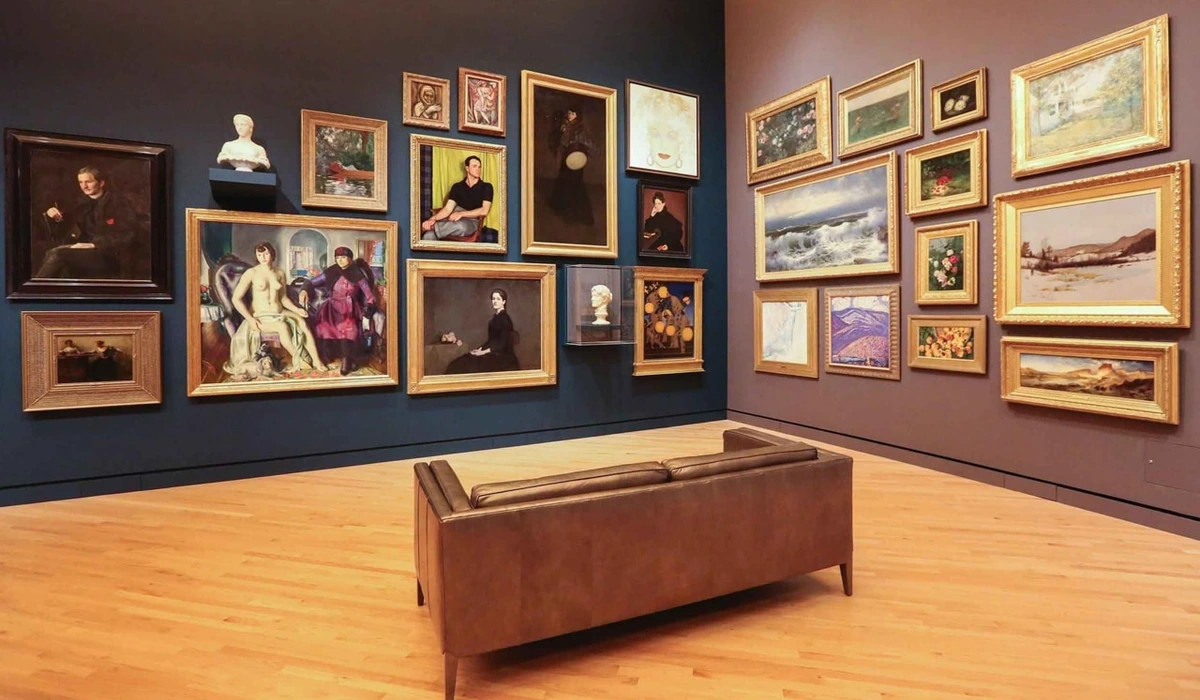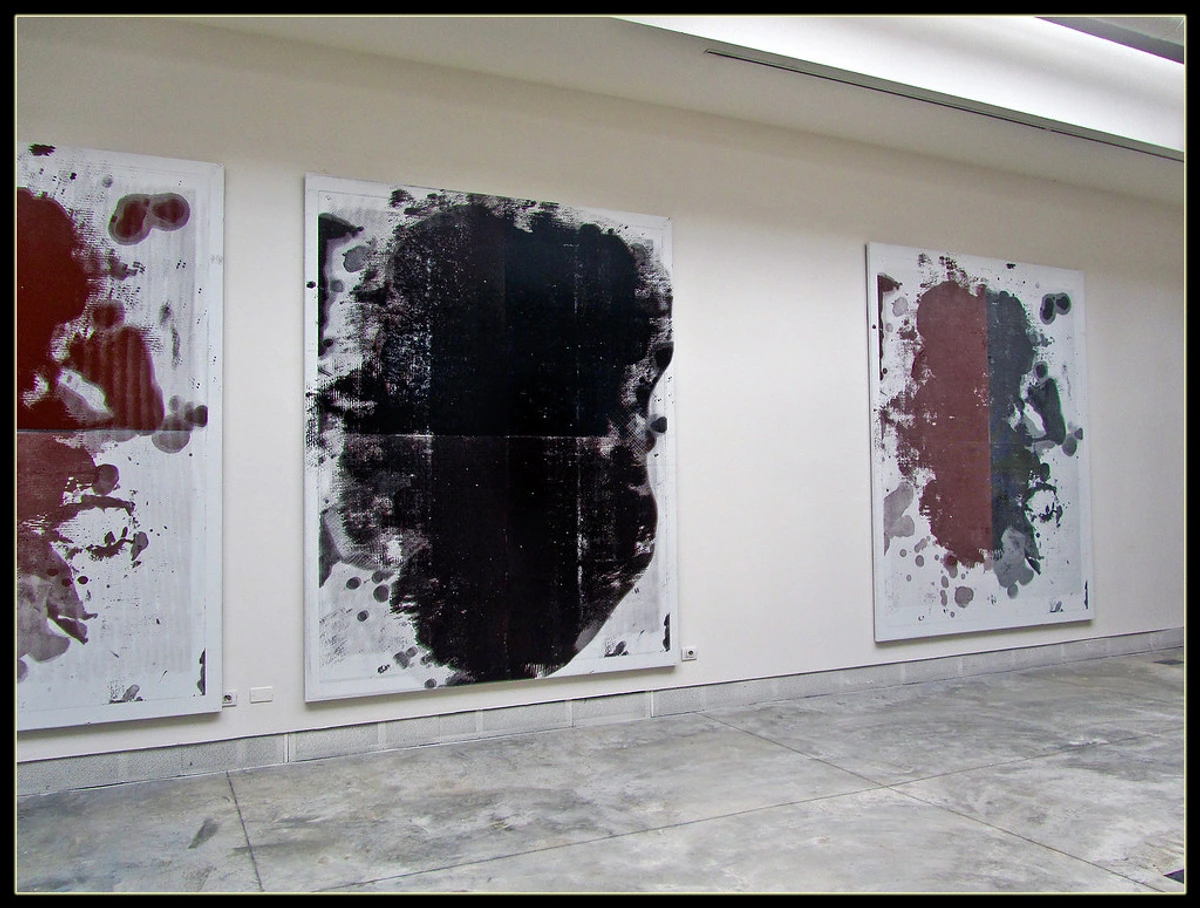
Collecting Art for Small Apartments: Maximizing Impact in Limited Spaces
I’ve always been a bit of a maximalist trapped in a minimalist's reality. My first tiny city apartment? It felt less like a blank canvas and more like a challenge to my burgeoning art collection. "Where," I wondered, pacing between my sofa and the kitchen counter, "will all my beautiful chaos live?" It's a common dilemma for urban dwellers, isn't it? We crave the soul and personality that art brings, but our walls often seem to shrink with every rent increase. But let me tell you, a small apartment isn't a limitation; it's an invitation to be incredibly smart and wonderfully creative with your art. It demands a different kind of discipline, a more intentional dialogue with each piece you invite into your home. This approach transforms perceived constraints into a beautifully curated stage, proving that small spaces don't just hold art; they become art. Trust me, I’ve stubbed my toe on more than one hastily placed sculpture in pursuit of this vision, but the results are always worth it. This guide will help you navigate the delightful nuances of art in compact living, from selecting pieces that truly resonate, mastering clever display techniques, and embracing essential care tips, all while ensuring your small space doesn't just feel grand, but profoundly yours.
The Art of the "Just Right": Choosing Pieces That Resonate
When you're dealing with limited square footage, every decision feels amplified. And art is no exception. It’s not just about filling a void; it’s about making a statement, creating a mood, and reflecting you. My approach has always been intensely personal – a piece has to speak to me, usually in a language of color and emotion that abstract art masters so well. But in a small space, there are a few extra layers to that conversation.
Style & Vibe: Abstract’s Untapped Potential and Beyond
For small apartments, I often lean towards abstract art. Why? Because it’s wonderfully versatile. Abstract art, a broad church encompassing movements like Cubism, Futurism, Abstract Expressionism, and Geometric Abstraction, broke from traditional representation to explore pure emotion, form, and color. This non-representational nature is precisely what makes it such a powerhouse for small spaces. Unlike representational art, which depicts literal scenes that might feel confined or overly prescriptive in a small room, abstract art offers a unique freedom. Its colors, shapes, and textures can open up a room, add depth, or provide a pop of energy. It’s like a visual whisper or a vibrant shout—a soft blue, ethereal piece might calm, while a bold geometric abstract by someone like Mondrian could invigorate a corner. Beyond mere versatility, abstract art avoids cluttering a small room with specific narratives or overly detailed imagery. It allows the viewer's eye to wander without getting "stuck" on a specific point, creating a sense of openness and mental expansion. It’s like a visual chameleon for your walls, adapting to your mood and space!
Consider how cool colors (blues, greens, violets) tend to recede, making walls feel further away and thus expanding the perceived space, while warm colors (reds, oranges, yellows) advance, adding a cozy intimacy or drawing attention to a specific area. Imagine a large abstract piece dominated by soft blues and whites; it can visually push back a wall. Conversely, a fiery red and orange abstract might energize a quiet corner or make a narrow hallway feel more vibrant. My guide on abstract art for small spaces: maximizing impact in compact areas dives deeper into this, but trust me, it’s a game-changer.

However, if abstract art isn't your personal cup of tea, don't despair! The principles of scale, visual weight, and color theory apply broadly. Look for minimalist figurative pieces with clean lines, photography with strong compositions and ample negative space, or graphic art that uses bold shapes and limited palettes. The goal is to choose art that complements your small space without overwhelming it, creating a sense of flow rather than confinement.

Scale: Challenging the "Small Space, Small Art" Myth
Common wisdom says go small in a small space. And yes, a collection of smaller pieces can be incredibly effective, especially in a curated gallery wall with abstract art: tips for a dynamic display. But let me challenge that notion: don't shy away from one or two surprisingly large artworks. A single, commanding piece can actually make a room feel bigger by drawing the eye and creating a powerful focal point. It says, "Yes, this is my space, and I have discerning taste!" without adding visual clutter. For instance, a towering vertical abstract, with sweeping lines or expansive color fields, placed on a main wall, can dramatically enhance ceiling height and pull the eye upwards, creating an illusion of grandeur that belies the room's actual footprint. Or consider a striking diptych or triptych that spans a wall, creating an expansive narrative, or a panoramic abstract that transports you to another world. A large-scale minimalist abstract with clean lines and a limited palette can offer a subtle yet impactful statement, or a bold color-field painting that covers a significant portion of a wall can create an immersive 'window' to another world, effectively expanding the room's perceived boundaries. What kind of statement do you want your large piece to make?
The Visual Weight of Art & Frames
When selecting art for a compact area, consider its visual weight. This isn't about physical weight, but how 'heavy' or 'light' a piece feels to the eye. A piece with a dense composition, lots of dark colors, or heavy textures might feel more imposing, sometimes making a room feel smaller. For example, a heavily impastoed abstract with dark, layered oil paints might 'compress' a space, or a detailed, classical portrait could feel overwhelmingly grand. Conversely, artworks with lighter tones, more negative space, or an airy composition can feel less "heavy" and contribute to a more open atmosphere. Think of a minimalist abstract with delicate lines on a pale background – it feels light and ethereal. It's about finding that delicate balance, a conversation between the art and the room itself. I remember a piece I loved, a really bold, dark abstract, that just sucked the light out of my tiny entryway. I had to move it to a larger wall, where it finally breathed.
Here's a quick guide to factors influencing visual weight:
Factor | Feels "Heavy" | Feels "Light" |
|---|---|---|
| Color | Saturated, dark, warm, high contrast | Muted, pale, cool, low contrast |
| Composition | Dense, complex, busy, many elements, geometric | Sparse, open, simple, few elements, organic |
| Texture | Thick impasto, rough, multi-layered | Smooth, flat, subtle, single layer |
| Negative Space | Little to no empty space | Abundant empty space, clear resting areas |
| Frame | Thick, ornate, dark, contrasting | Thin, minimalist, light, blending with wall color |
The frame itself is an often-overlooked design element that significantly impacts visual weight, especially in small spaces. Thin, minimalist frames (or even frameless canvases) are less visually intrusive, allowing the art to float effortlessly and the eye to move freely, maintaining that open feel. Conversely, a bolder, more ornate frame can serve as an additional design statement, adding character and drawing attention to the piece, but also increasing its perceived weight. Consider the frame color too: a white or light-colored frame can make the art feel lighter and recede, blending with light walls, while a black frame can anchor a piece, giving it more presence. It’s all about intention – do you want the art to blend subtly, or shout confidently from its chosen spot? Also, don't underestimate the power of negative space within the artwork itself. A piece with well-balanced empty areas can paradoxically make a room feel less cluttered by giving the eye a place to rest, creating a sense of calm and visual breathing room, which is invaluable in compact environments.

Defining Zones with Art
In an open-plan small apartment, art can be an ingenious tool for defining separate zones without needing physical dividers. A large, striking piece above your sofa instantly designates the living area, perhaps a vibrant color-field abstract to spark conversation. A smaller, thoughtful print or a series of works near your desk carves out a distinct workspace—here, a dynamic geometric abstract might foster focus, or a calming blue abstract (think the psychology of blue) could encourage contemplation. For a studio apartment, a carefully placed triptych might delineate the sleeping area (opt for serene, flowing abstracts here) from the living space. In a one-bedroom, a vertical piece could mark the transition from hallway to the main living area, acting as a visual gateway. This subtle demarcation helps to break up the overall area, making it feel more functional and less like one undifferentiated room. How do you want to delineate your living areas and what mood do you want to evoke in each?

Smart Collecting: Making Every Piece Count
In a smaller home, you're not just collecting art; you're curating your personal sanctuary. This means being more intentional. I remember agonizing over a purchase once, convinced I didn’t have the wall space. It felt like trying to fit a whale into a teacup! But then I realized, the right piece will always find its place. It's about quality over quantity, and truly connecting with what you bring into your home. This intentionality, this beautiful discipline, makes each piece profoundly significant, deeply integrated into the story of your home, much like my own emotional connection to art. Consider the artist's story or the provenance of a piece; these narratives can add layers of personal meaning and value, transforming a simple purchase into a cherished part of your home's identity.
Where to Find Your Treasures (Without Breaking the Bank)
Collecting doesn't have to be intimidating, even for a compact space. I often find myself browsing online marketplaces and connecting directly with artists. Look for artist websites, their Instagram profiles, reputable online galleries like Saatchi Art, Etsy, local art collectives’ online shops, or even better, visit local galleries and university art department exhibitions. There's something truly special about seeing a piece in person, talking to the artists, and discovering emerging talent right in your community. Pay attention to the artist's statement, their body of work, and the quality of their images. Don't be afraid to reach out and ask questions – most artists love to talk about their work! There are incredible places to find affordable original art online. And of course, you can always explore my latest art for sale directly on my site – maybe you'll find that perfect piece that speaks to your small but mighty apartment!
Displaying with Panache: More Than Just Hanging a Picture
This is where the magic happens! A small space demands smart, sometimes unconventional, display techniques. It’s about leveraging every surface and every angle to make your small room feel bigger and more interesting. Always consider the function of the room: for a bedroom, art might lean towards calming colors or serene abstracts, while a home office could benefit from invigorating, stimulating pieces.
The Mighty Gallery Wall
A gallery wall is practically a secret weapon for small apartments. It allows you to showcase multiple pieces without consuming vast amounts of wall space horizontally. Instead, you go vertical! Mix and match sizes, frames, and even mediums. I've found that a well-composed gallery wall can be the ultimate focal point in a living area. Just remember to plan it out first – a little painter's tape goes a long way! It's like a visual symphony of your passions, a carefully orchestrated collection that draws the eye and makes a statement without overwhelming the room.

Strategic Art Placement: Beyond Eye-Level
Dare to defy traditional hanging heights and explore forgotten nooks. These unexpected placements add layers of interest and demonstrate a confident, playful approach to decorating an apartment. Think about how you use the space: placing a small, engaging piece near a reading chair, or a dynamic print where your eye naturally lands upon entering a room. Remember, every inch counts, even those awkward wall spaces and narrow alcoves!
- Above Doorways or Windows: That often-ignored sliver of wall can hold a small, elongated piece or a pair of prints, drawing the eye up and utilizing otherwise dead space.
- Leaning Art: Casually lean a framed piece on a bookshelf, a dresser, or even against the wall on the floor for a relaxed, art-studio vibe. This is also renter-friendly!
- Mini Easels: A small easel on a side table or in a corner can elevate a beloved print or small canvas, turning a flat surface into a mini-gallery.
- Open Shelving: Tuck art into an open shelving unit, perhaps behind other decor, for a layered and textured look. Don't underestimate the power of grouping smaller pieces here.
- Anchoring Furniture: Use art to visually anchor furniture. A piece hung slightly wider than a console table can make the entire arrangement feel more substantial, or a vertical piece perfectly centered above a bed can define the sleeping zone.
- Renter-Friendly Hacks: For those hesitant to put holes in walls, consider using adhesive hooks (like Command strips) for lighter pieces, leaning larger canvases, utilizing picture ledges that require minimal fasteners but offer flexible display options, or even tension rods to hang lightweight fabric art or prints. Your apartment can still be a gallery, no drilling required!

Lighting: Your Art's Best Friend
Even the most exquisite piece can fall flat without proper illumination. Good lighting can transform your art and, by extension, your entire room. Accent lighting, track lights, or even a well-placed floor lamp can highlight textures and colors, making your art truly pop and bringing it to life. This subtle touch makes a huge difference, as explored in the art of display: how to light and position abstract art for maximum impact. Don't forget your sculptural pieces either; a cleverly positioned spotlight can create dramatic shadows, adding another dimension to your three-dimensional art. How will you illuminate your collection?
Sculptural Touches: Adding Dimension Without Bulk
Art isn't just flat! Consider small, delicate sculptures or interesting objects. These can occupy forgotten corners, shelves, or even function as unique bookends, adding a three-dimensional element without overcrowding. Think about how a strategically placed ceramic piece can break the monotony of flat surfaces or how a sleek metal sculpture can add an unexpected modern edge to a cozy nook. Grouping smaller sculptures (three is often a magic number) on a tray or within a clear section of a bookshelf can create a cohesive vignette without demanding much space. These pieces add tactile interest and depth that flat art simply can't, engaging the viewer in a different way.
- Ceramic Pieces: A unique, handcrafted vase or abstract ceramic sculpture (like some of my own more textured pieces) can add organic texture and an earthy feel, bringing a touch of nature indoors.
- Small Metalwork: Geometric metal sculptures or delicate wire art introduce a modern, industrial touch and play beautifully with light and shadow.
- Decorative Books & Found Objects: Beautifully bound art books stacked strategically, or a unique found object—a sculpted piece of driftwood, a polished stone, or an interesting antique—can be art in its own right, sparking conversation and reflecting your personality. I once turned a particularly gnarled piece of root into a centerpiece, and it brought so much character to my tiny dining table! These pieces are often incredibly personal and tell a story, grounding your space with a touch of the unique and unexpected.
Just be mindful of walking paths – nobody wants a stubbed toe incident with a beloved art piece, no matter how much you love it! It's a fine line between a curated display and an obstacle course.
Caring for Your Collection in Close Quarters
Living with art in a small apartment often means living closer to your art. This makes proper care and protection even more crucial. While you don't need a museum-level climate control system, a few simple habits can extend the life and vibrancy of your collection. Remember, art conservation in a small space often means being extra vigilant about its immediate environment.
- Protection from Bumps and Scratches: In high-traffic areas, consider placing art slightly out of direct bumping range. For framed pieces, protective bumpers on the back can prevent wall scuffs and stabilize the art. If leaning art, ensure it's in a stable spot where it won't easily tip. Avoid placing delicate items directly at elbow height in narrow hallways – a lesson I learned the hard way!
- Cleaning: Dust is art's silent enemy. Gently dust framed art with a soft, dry cloth. For unframed canvases or sculptures, a soft brush or a light dusting with a microfiber cloth is usually sufficient. For unframed prints, photographs, or works on paper, handle them by the edges with clean hands or gloves, and store them flat in acid-free sleeves or folders to prevent creasing and damage. Never use abrasive materials or harsh cleaning agents. Avoid harsh chemicals or excessive moisture.
- Light Exposure: While some natural light is lovely, direct, prolonged sunlight can fade colors and damage materials over time. Position valuable pieces away from direct sun, or consider UV-filtering window films if a spot is unavoidable. Even artificial lighting, if too intense, can cause issues. Avoid placing art directly above radiators or heating vents, as temperature fluctuations can also cause damage.
- Humidity: Extreme fluctuations in humidity can cause canvases to stretch or warp. Try to maintain a relatively stable environment. If you live in a very humid or very dry climate, a small humidifier or dehumidifier can help protect your art (and your comfort!). Keeping art in bathrooms or kitchens with high moisture should generally be avoided unless specifically designed for such environments.
- Child and Pet Proofing: If you share your small space with energetic children or curious pets, secure wall-hung art firmly. For freestanding sculptures or tabletop pieces, place them on high shelves or in areas inaccessible to tiny hands or wagging tails. Sometimes, a beautiful but fragile piece is best admired from a distance on a high perch. It's better to be safe than sorry, especially when a cherished piece is at stake.
The Art of Rotation: Keeping Your Space Fresh
One of the unexpected joys of collecting for a small apartment is discovering the power of rotation. You might not have endless walls, but you can certainly change what's on them. This practice keeps your space feeling fresh and allows you to reconnect with pieces you might have stored away. I often find myself moving a vibrant abstract from the living room to my small entryway when I feel the need for a burst of energy, or swapping a calming landscape into my bedroom for a more serene atmosphere. It’s like giving your apartment a mini-makeover without buying anything new!
- Seasonal Swaps: Change out artwork with the seasons. A bright, airy piece for spring/summer, a moodier, richer one for autumn/winter. This helps synchronize your home's vibe with the world outside.
- Room Swaps: Don't be afraid to move pieces between rooms. That painting that feels a little lost in the living room might shine as a focal point in the bedroom or home office. Experiment to see how different lighting and surroundings transform a piece.
- Curated Storage: For pieces not currently on display, store them properly. Wrap canvases in acid-free paper or cloth and store them upright in a dry, temperature-stable area, away from direct light. This also lets you have a "reserve collection" to refresh your space whenever the mood strikes, allowing you to continually rediscover your treasures.
The Psychological Canvas: Art's Impact on Small Spaces
Beyond aesthetics, the art you choose for your small apartment carries a profound psychological weight. It can literally make a compact home feel more expansive, not just visually, but emotionally. Imagine how a sweeping abstract landscape can create an illusion of depth, or how a piece dominated by cool, receding blues can make walls feel further away. Each thoughtfully selected piece contributes to a sense of personal sanctuary, transforming what might otherwise be perceived as a limitation into a richly textured, uplifting environment. It’s a testament to how even the smallest spaces can hold the biggest dreams, a reflection of the personal journey we undertake when we invite art into our lives. When I look at the art I’ve chosen for my own intimate space, I don’t just see paint and canvas; I see resilience, creativity, and the joy of making a small world feel infinitely vast. Moreover, art acts as a powerful conversation starter, offering guests a glimpse into your passions and personality, making your compact home a hub of engaging dialogue and unique self-expression. Studies in art therapy even suggest that surrounding yourself with meaningful art can reduce stress and enhance overall well-being, turning your small apartment into a true haven. This connection to art is a profound part of my own timeline as an artist. How does the art in your space make you feel, and how does it shape your daily experience?
Frequently Asked Questions About Art in Small Apartments
Can I really have large art in a small apartment?
Absolutely! A single, large, carefully chosen piece can serve as a stunning focal point and visually expand the room. The trick is to ensure it's proportional to that specific wall, not necessarily the entire room, and that it doesn't overwhelm the space. Imagine a vast, sweeping abstract landscape filling a wall; it can create a window to another world, making your room feel boundless. For instance, a tall, narrow abstract can draw the eye upwards and enhance the perceived ceiling height, making a room feel airier.
How do I avoid a cluttered look with art in a small apartment?
Focus on intentionality. Less is often more. Group similar pieces, use consistent framing for gallery walls, and allow for negative space. Don't feel every wall needs art; sometimes, a clean wall allows other pieces to breathe and shine. Consider using art to define zones rather than just decorating every available surface. Remember the visual weight principle: lighter pieces contribute to a less cluttered feel. Prioritize quality over quantity, ensuring each piece truly earns its spot.
How do I choose art for a challenging small space, like a studio apartment or a long, narrow room?
These spaces demand an extra layer of creative problem-solving, which I secretly love! For studio apartments, think about using art to clearly define functional zones, perhaps a vibrant piece for the living area and a calming, softer abstract near the sleeping nook. Vertical art can be a savior in narrow rooms, drawing the eye upwards and creating an illusion of height. Consider a series of smaller, related pieces in a vertical line, or a single, tall abstract. Also, don't forget the power of reflective surfaces – art behind glass can subtly expand a space. And remember, sometimes the best solution is to let a wall breathe, allowing one impactful piece to truly shine rather than cluttering with many. It's about strategic pauses and intentional focal points.
How can I hang art in a rental apartment without drilling holes?
Many excellent renter-friendly options exist! Consider adhesive hooks and strips (like Command strips) for lighter framed pieces. Picture ledges that require minimal fasteners (often just one or two small nails that can be easily patched) offer flexible display. Leaning larger canvases directly against a wall on the floor or on furniture creates a casual, stylish look without any wall damage. Tension rods can also be used in doorways or alcoves to hang lightweight fabric art or prints. Be creative and explore solutions that fit your lease and artistic vision!
Where should I buy art for a small budget?
Online marketplaces, local art fairs, student exhibitions, and direct from emerging artists are fantastic places to start. Don't be afraid to buy art online. My art for sale section also offers a range of options, and you might discover a piece perfect for your space without a hefty price tag. You could even visit my museum in 's-Hertogenbosch for inspiration and to see how scale and display work in a larger context!
How do I choose art that complements existing furniture and decor?
Think about color palettes, textures, and the overall mood of your space. Do you want the art to blend seamlessly or provide a vibrant contrast? Look for subtle undertones in your furniture fabrics or wall colors that you can echo or play against in your art. Consider a piece that shares a subtle color with your sofa, or introduces an an accent color found in a throw pillow. Abstract art is particularly forgiving here, as its non-representational nature allows it to harmonize with a wider range of interior styles. Trust your gut feeling – if it feels right, it probably is!
Key Takeaways for Art in Small Apartments
- Embrace Abstract Art: Its versatility, depth, and non-representational nature excel in compact spaces, creating visual expansion.
- Master Visual Weight: Understand how color, composition, texture, and frames impact a piece's perceived 'heaviness' and the overall feel of a room.
- Don't Fear Large Pieces: One bold artwork can act as a powerful focal point and visually expand a room when chosen proportionally to its wall.
- Strategically Define Zones: Use art to delineate functional areas in open-plan layouts, giving purpose and flow to your space.
- Explore Unconventional Display: Look beyond eye-level and embrace leaning, shelves, and unexpected spots to add interest and utilize space.
- Prioritize Lighting: Proper illumination brings your art to life and enhances the room's ambiance, drawing attention where you want it.
- Incorporate Sculptures: Small, thoughtfully placed 3D objects add unique dimension, texture, and personality without adding bulk.
- Practice Intentional Collecting: Choose quality over quantity, focusing on pieces that truly resonate with you and tell a story, including the artist's narrative or provenance.
- Mindful Care: Protect your art from damage, dust, harsh light, and humidity, especially in close quarters, and properly store delicate prints/works on paper.
- Rotate Your Collection: Keep your space fresh and re-engage with your art by periodically changing displays, allowing for new perspectives.
Conclusion: Your Small Apartment, Your Grand Gallery
Collecting art for a small apartment isn't about compromise; it's about celebration. It's about discovering how a thoughtfully chosen painting, a dynamic gallery wall, or a subtle sculpture can transform your living space from merely functional to profoundly personal. It’s about making every square foot sing with creativity and character. So go ahead, embrace the cozy, and let your walls tell your unique story. Your small apartment is waiting to become your most cherished gallery. It's a testament to your ingenuity and your passion, proving that even the most compact homes can be boundless in spirit and style.




